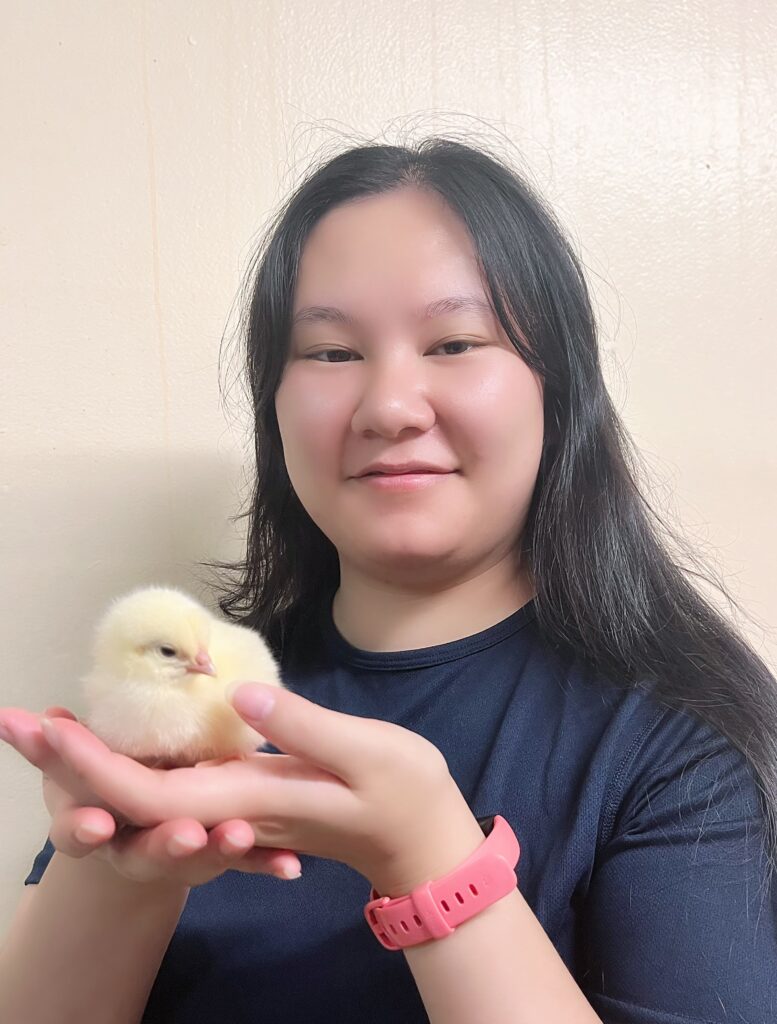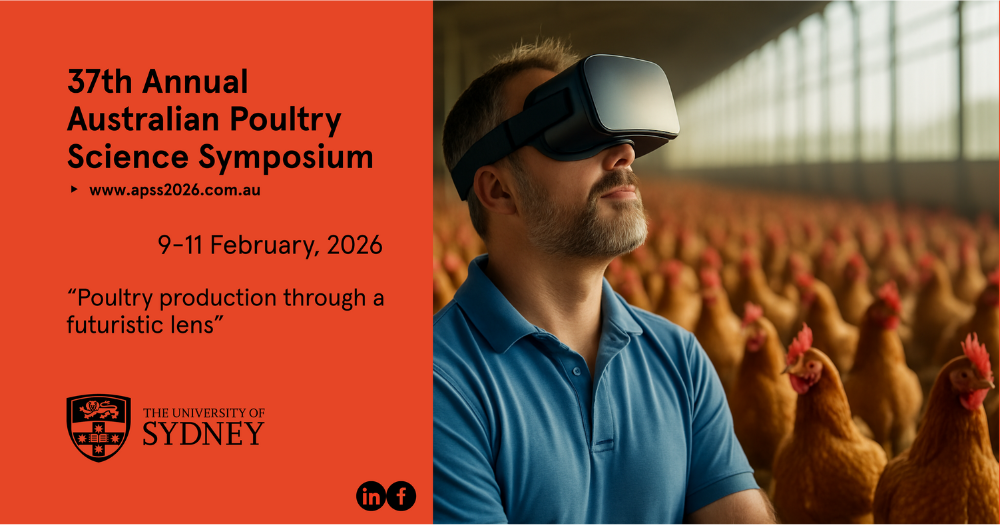PhD Scholar – Carria Xie
By Mingan Choct

Carria Xie is a first-year PhD candidate, using novel strategies to investigate how energy and amino acid levels affect broiler chicken performance in male and female birds.
Carria grew up in Sydney, Australia’s largest city and did not have much contact with the agricultural industries. So I asked her what attracted her to do Animal Science at the University of Sydney for her bachelor’s degree and now a PhD in poultry nutrition. “Every Australian consumes around 53kg of poultry meat and 260 eggs per year, which makes it very important for our food security”. “My motivation to conduct research in broiler chickens is to improve sustainability and food security while decreasing the negative environmental impact of chicken meat production. The method by which I hope to achieve my goals is to optimise nutrient usage and minimise nutrient excretion”, Carria answered.
Carria is doing her PhD under the auspices of Associate Professor Sonia Liu, conducting research to innovate feed formulations for modern-genotype broiler chickens. Her focus is to explore differences in breeds, breeder generation and gender in energy metabolism and nutrient utilisation in terms of efficiency. “Due to the relatively short production cycle of broiler chickens, changes to the gene pool occur frequently altering the requirements of birds. Nowadays, not only are differences in dietary requirements between breeds but also between generations within the same breed, needing formulations to adjust and accommodate accordingly. While it was previously accepted that birds ate to meet their most limiting nutrient requirement, recent studies have shown that modern broiler chicks eat to their maximum physical capacity”, said Carria.
In her first experiments, Carria adjusted the energy level and amino acid density to optimise feed cost while maintaining growth performance. “My results show that the recommended energy levels for the breeds we used are higher than what is required by the bird. An appropriate reduction in dietary energy with further optimisation of the amino acid ratios tended to improve bird performance”.
Carria has recently completed her second experiment aimed at identifying the difference in nutrient requirements between Cobb and Ross, the two most common broiler breeds in Australia. The complex interactions of nutrient density, bird breed, and gender were used to measure bird performance.
We wish Carria all the best in her quest to increase sustainability and profitability in poultry production through her PhD program, adding to the ever-growing knowledge pool available in poultry nutrition.
Latest news
Our events
- The Countdown is on for APSS 2026With just over 120 days until APSS 2026, planning for the 37th annual Australian Poultry Science Symposium is progressing smoothly. Next year’s event will return to the University of Sydney Business School – Belinda Hutchinson Building (H70) on the Camperdown Campus, and we’re excited to once again welcome delegates for 2.5 days of presentations, posters, networking, and industry engagement.
Connect with us:


